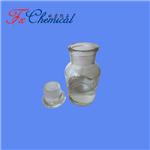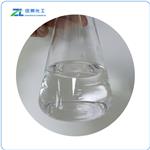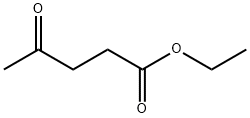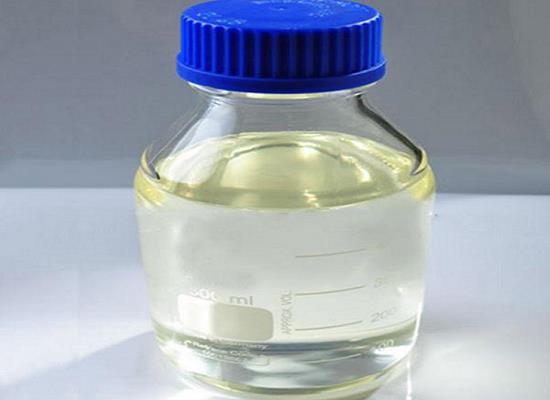Synthesis of Ethyl Levulinate
In this study, 40 % H3PW12O40/ZrO2 catalyst was synthesized, characterized and tested for conversion of levulinic acid (LA) and ethanol (EtOH) to ethyl levulinate (EL). The catalyst was prepared through wetimpregnation method. Catalyst characterization using BET and NH3-TPD revealed that the catalytic performance was dominantly influenced by the acid sites and surface area of the catalyst. The perfomance of the catalyst was tested based on reaction time (30 min to 4 h) and reaction temperature (120 °C to 160 °C) with 1:5 levulinic acid to ethanol ratio. The 40 % H3PW12O40/ZrO2 catalyst exhibited high catalytic performance at 150 °C with time taken 3 h for 99 % yield of ethyl levulinate.
1. Introduction
Lignocellulosic biomass is a major source for production of many bio-based chemicals (Barontini et al. 2015). The lignocellulosic biomass is also nontoxic and biodegradable (Delhomme et al. 2014). Biomass could be in the form of sugar, starch, oil crops, wheat straw, giant reed, oil palm frond, empty fruit bunch, and animal manure, which are currently utilized for the production of liquid fuels and chemicals to replace fossil fuels (Tang et al. 2014). Levulinic acid is largely obtain by the dehydration lignocellulosic biomass (Cirujano et al. 2015). Derivatives of levulinic acid are utilized as a bio-based chemical mainly in the production of gasoline and diesel fuel. Esters of levulinic acid are promising for flavouring and solvents (Kuwahara et al. 2014). Specifically, ethyl levulinate is an interesting chemical because this compound is utilized for diesel miscible biofuel (Fernandes et al. 2012).
Traditionally, esterification reaction was conducted in the presence of mineral acids such as H2SO4, H3PO4 or HCl (Bart et al. 1994) but homogeneous acid catalysts are unrecycleable and always costly in its operation. Moreover, it is a corrosive chemicals to equipment (Neves et al. 2013) and have some drawbacks in the catalyst such as limited catalytic activity, environmental problems, toxic waste generation (Melero et al. 2013). For instance, one pot synthesis of ethyl levulinate from lignocellulosic biomass in the presence of homogeneous mineral acids produce quantitative yield but have some serious drawbacks such as high temperature, limited catalyst recyclability and only utilized low molecular weight alcohols, bulkier alcohols was not effective for the reaction (Melero et al. 2013). Hence, heterogeneous catalyst were introduced for esterification of levulinic acid and ethanol that could eliminate all the disadvantages of homogeneous catalyst.
As alternatives to the homogeneous catalysts, heteropoly acid catalyst is well established area and has green benefits. Heteropolyacids divided into several examples such as H4SiW12O40, H4MoW12O40 and H4PW12O40 (Huang et al. 2008). Among heteropolyacid catalyst, phosphotungstic acid (H4PW12O40) catalyst is highly utilized catalyst for many reactions because of its high bronsted acidity site and sustainable acid catalyst (Cirujano et al. 2015). Heteropoly phosphotungstic acid could be applied as a heterogeneous and homogeneous catalyst depending on the composition and presence of support catalyst. As recently revealed that heteropolyacids soluble in ethanol and methanol. Hence, heteropolyacids was utilized in the presence of its supported catalyst to make it easily separable from the reaction mixture. There was a study conducted for the production of biodiesel via transesterification reaction under mild condition in the presence heteropolyacids but it was found that heteropolyacid is highly soluble in water and polar solvents.
Moreover, it has low surface area which deplets its heterogeneous characteristics. Hence, to overcome this problems previous studies intended to utilized supported heteropoly phosphotungstic acid (H3PW12O40) for the production of biodiesel from the transesterification of rapeseed oil and ethanol and found that hydrous zirconia supported heteropolyacids provide a high catalytic activity which involved the combination of lewis acid sites and hydoxyl group (Morin et al., 2007). Moreover, heteropoly phosphotungstic acid been utilized as an individual catalyst for the production of EL with quantitative yield, but its solubility in solvent and difficult in the separation of catalyst from reaction mixture become disadvantages of the catalyst. Hence, to overcome these problems heteropoly phosphotungstic acid been impregnated on the metal oxide surface.
In this paper, the study reported on the production of ethyl levulinate (EL) from levulinic acid over 40 % H3PW12O40/ZrO2. Firstly, the study was conducted under different temperature (120 to 160 °C) and time taken (30 min to 4 h). This paper also focused on the characterization of catalyst that prepared using wet impregnation method. The characterization mainly on the acidity site of the catalyst using NH3-TPD and surface area using BET. These two properties important in evaluated catalytic perfomance of 40 % H3PW12O40/ZrO2 in the production of EL via esterification of LA.
2. Experimental Section
2.1 Chemicals
All the chemicals were supplied from Merck, Germany. The Keggin-type heteropolyacid used in the reaction was phosphotungstic acid (H3PW12O40), Zirconium Oxide (ZrO2) was used for the catalyst preparation. Ethanol was used as a solvent for the reaction and alcohol for the esterification reaction.
2.2 Catalyst preparation
The catalyst was prepared via impregnation method. The catalyst was prepared by mixing the solid form of zirconium oxide (ZrO2) with Keggin-type heteropolyacid (H3PW12O40). The preparation was in wt% such as 40 wt %. The zirconium oxide powder was weighted and added to 30 mL of water, follows the stated amount of Keggin-type heteropolyacid (H3PW12O40). Mixture then stirred at 80 ºC for 2 h and dry under oven for 12 h at 100 ºC to remove excess water. Finally, the prepared catalyst was calcined at 450 ºC for 5 h.
2.3 Catalyst Characterization
The acidity properties of catalysts were analysed using NH3-temperature programme desorption (NH3- TPD). Brunauer- Emmet-Teller (BET) method was applied to study surface area, pores volume and size distribution using Micrometrics ASAP2020 analyzer with isotherm nitrogen adsorption.
2.4 Catalytic activity
The conversion of levulinic acid to ethyl levulinate was carried out in the presence of 30 mL of ethanol as solvent for the reaction, solid acid catalyst and the reaction was performed in a high pressure stirred autoclave reactor at 150 ºC. Finally, the product was analysed using GC-FID to obtain the yield of products. The reaction was repeated with various temperature and reaction time taken.
3. Results and Discussion
3.1 Catalyst Characterization
3.1.1 Brunauer- Emmet-Teller (BET)
The BET values in Table 1 indicate that impregnation of H3PW12O40 on ZrO2 increased the surface area of the solid catalyst. The surface area was 18.81 m 2 /g for 40 % H3PW12O40/ZrO2 which shows that the impregnated catalyst surface area was higher than parent-ZrO2 catalyst because porous characteristics of ZrO2 that enables to increase its own surface area when impregnated with other catalyst (Katryniok et al. 2010). In the present study, ZrO2 prevents H3PW12O40 soluble in polar solvent and easy for the separation from reaction mixture. Based on the total surface area obtained, it was confirmed that surface area influenced by the catalytic performance for the production of EL.
You may like
Related articles And Qustion
Lastest Price from Ethyl levulinate manufacturers

US $0.00-0.00/kg2025-04-21
- CAS:
- 539-88-8
- Min. Order:
- 25kg
- Purity:
- 99%
- Supply Ability:
- 10000kg

US $55.00/kg2025-04-21
- CAS:
- 539-88-8
- Min. Order:
- 1kg
- Purity:
- 99%
- Supply Ability:
- 20 tons


